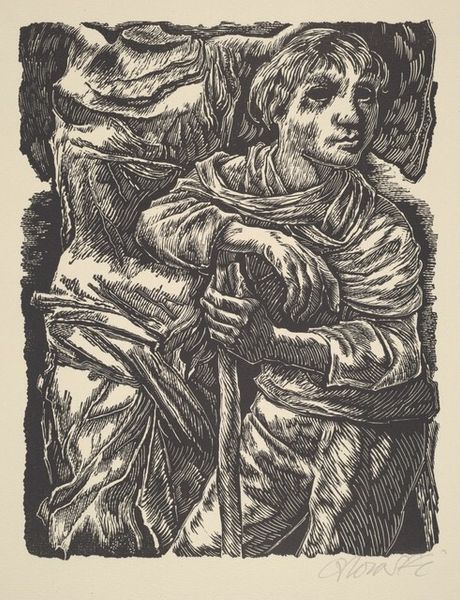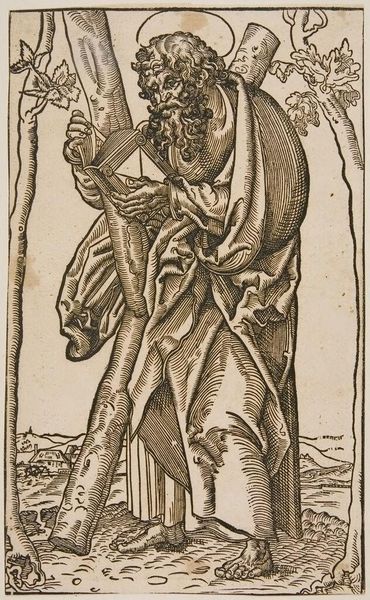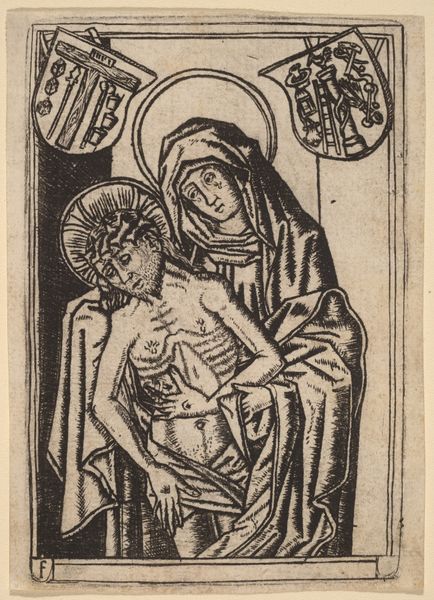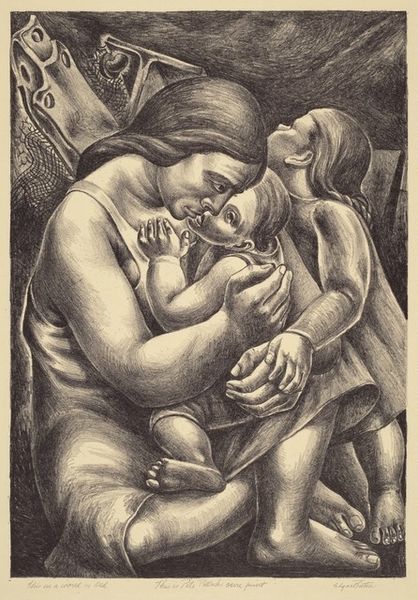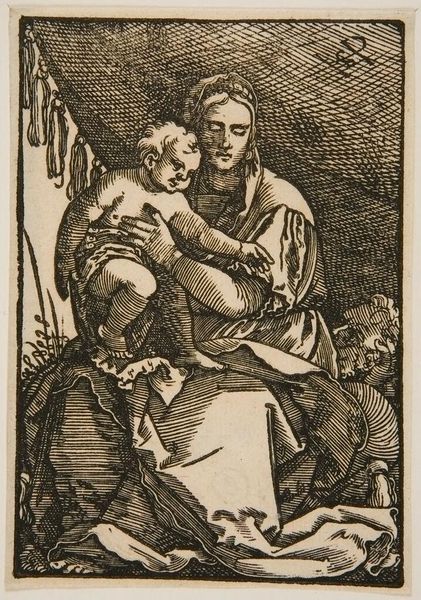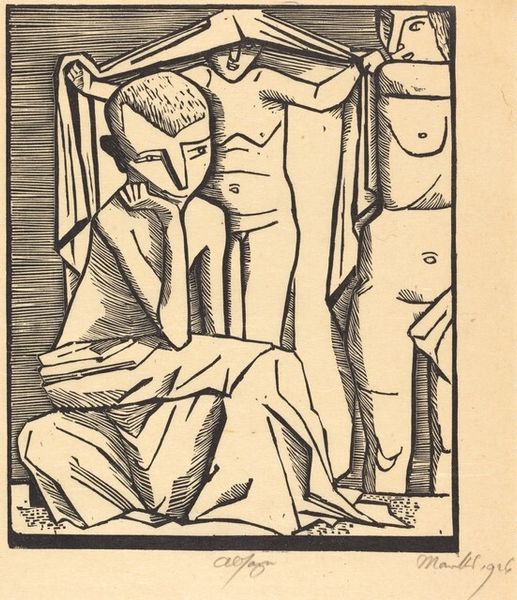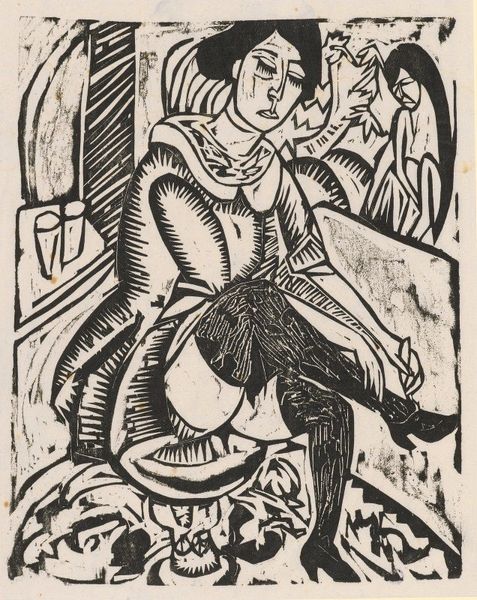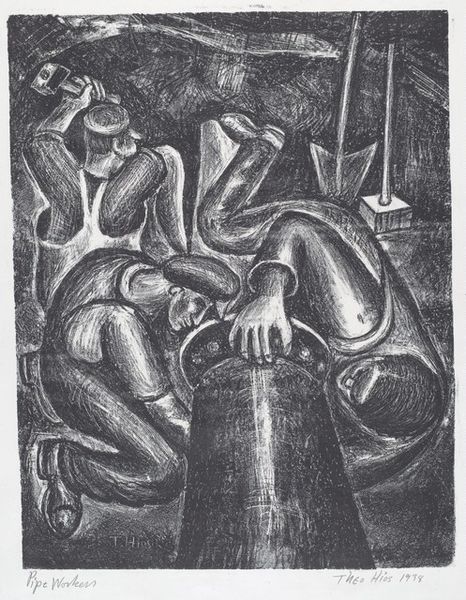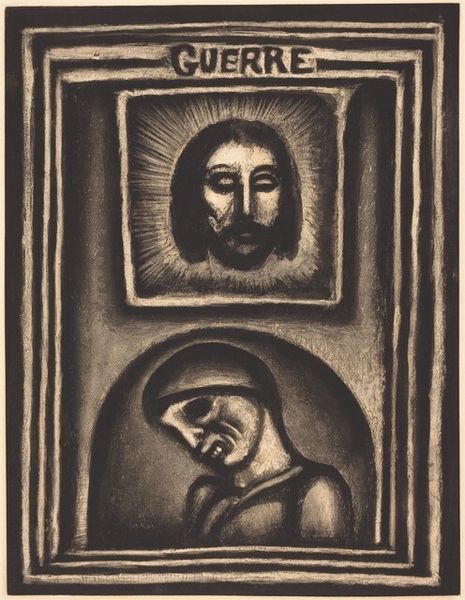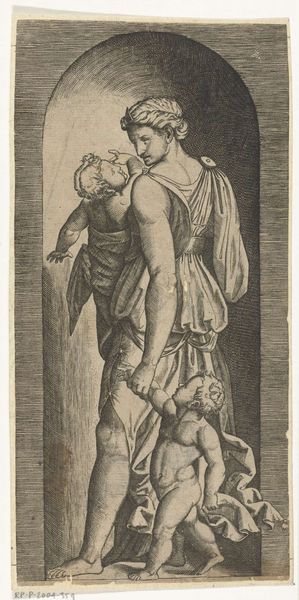
print, woodcut
#
portrait
#
medieval
#
narrative-art
#
pen drawing
# print
#
pen illustration
#
pen sketch
#
figuration
#
pen-ink sketch
#
expressionism
#
woodcut
#
pen work
Copyright: Public Domain: Artvee
Editor: Here we have Mikuláš Galanda’s "Holy Family" from 1924, made using woodcut, it is quite evocative. I'm immediately struck by the sharp lines and the almost raw texture of the print. It feels very immediate. How do you read this piece? Curator: I see a deliberate return to the basics of art making. Look at the artist’s labor – the physical act of carving away at the wood, the direct contact with the material. It suggests a stripping away of bourgeois artistic pretension, aligning the artwork with more "common" forms of labor and production. Notice the way the woodcut flattens the image and almost dehumanizes the subjects. Why do you think Galanda would flatten the picture in this manner, almost returning to early, medieval artistic conventions? Editor: Perhaps to align the ‘holy family’ with all families who are working families - to make them more relatable, less ethereal? Do you see other aspects that reflect these principles? Curator: Definitely. Consider the historical context: 1924 was a time of great social and economic upheaval. Galanda uses accessible materials and printing methods - he made several prints like this - broadening its potential audience by utilizing cheaper and quicker production methods. This brings up questions about who has access to art, and whose stories are being told through art. Editor: It makes me think about the art world’s values themselves - are we privileging one form of artistic labour over others? Is that fair? Thanks for a fresh perspective on Galanda's woodcut, seeing it in this production light is helpful. Curator: My pleasure. Thinking about art from the ground up, from its material and labor, always unearths something.
Comments
No comments
Be the first to comment and join the conversation on the ultimate creative platform.
